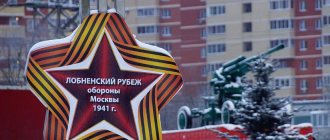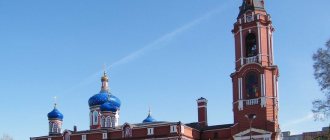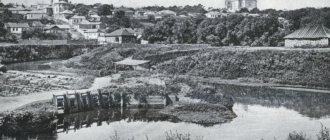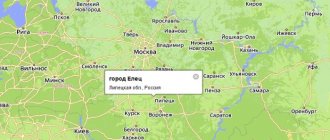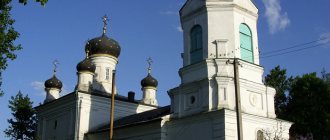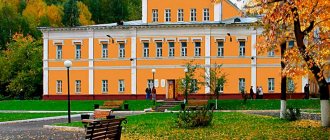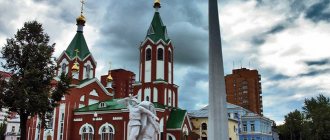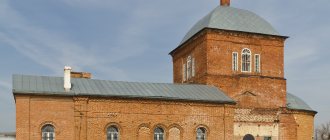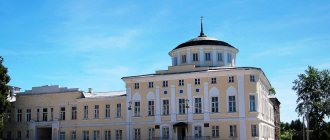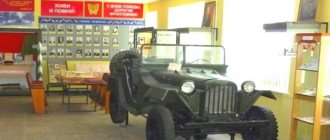The ancient Russian city of Spas-Klepiki, the sights of which we will consider in the article, was first mentioned in chronicles in the mid-seventeenth century. The name is interpreted interestingly. “Klepiki,” scientists believe, is a knife for cutting fish. And the word “saved” was already attached to the name after the construction of the Church of the Transfiguration of the Lord in the nineteenth century. Some folk legends claim that the church was built by robbers as a sign of repentance for their crimes. Other legends say that the temple was erected by local merchants for miraculous deliverance from persecution by robbers. Since ancient times, one of the main industries of the inhabitants was fishing. It is not for nothing that a fish, together with a cross and a feather, is depicted on the city’s coat of arms.
The small provincial town of Spas-Klepiki (Ryazan region) with a population of less than six thousand does not have high-rise buildings. There are mainly one- and two-story houses here. Some buildings are well preserved, others look very unkempt.
Where is
The city with an unusual double name lies in the center of the Meshchera Lowland, on the banks of the Pra River. The village of Klepikovo (“klepiki” – a place where fish is cut with a special knife) was first mentioned in documents in 1676. From this time his age is calculated. But people lived in these places fertile for fishing and hunting much earlier.
The settlement lay on the ancient trade route along the Pra River, which since the 11th century connected the ancient cities of the Russian principalities - Ryazan and Vladimir. The second part of the name – “Spas” – appeared in the 19th century after the opening of the Church of the Transfiguration of the Lord in the village, but it did not take root well.
Only at the beginning of the 20th century, after the two parts were united into one name, the village received its final name “Spas-Klepiki” and was annexed to the Ryazan region. Its coordinates: 55°08′00″ N. w. 40°10′00″ E. d. A powerful impetus to the development of the village was given by the construction of the Ryazan-Vladimir narrow-gauge railway, which passed through their settlement at the request of the Klepikovsky merchants.
At the same time, despite the additional costs, a 200-meter bridge was built across the Prue. The costs quickly paid off, since factories producing tow and cotton wool operated in Spas-Klepiki, supplying the whole of Russia with their products.
In 1999, the railway track and bridge, which was not in use due to non-standard gauge sizes, were dismantled, and now the city can only be reached by road, and the remains of the embankment, sleepers and bridge are considered a local landmark.
The distance between Moscow and Spas-Klepiki is almost 240 km, which can be covered by car in 3 hours, spending 665 rubles on gasoline. By bus, the trip from the capital's Central Bus Station on Shchelkovskaya will take almost 4 hours. A travel ticket costs 650 rubles.
You can travel 76 km from Ryazan by car in 1 hour, by bus from the Ryazan Prioksky bus station - 1.25 hours. Ticket price – from 190 rubles.
Story
In the 17th century Two important trade routes passed through Spas-Klepiki: Ryazan - Vladimir and Yegoryevsk - Kasimov. Thanks to this, the village turned into a major center of transit trade and wealthy merchants became interested in it. In the center of the settlement, they built their houses, forming a quadrangular square, from which radiated streets with simpler houses, where artisans, handicraftsmen, and minor officials lived. By 1905, Spas-Klepiki had become a fairly large village with several dozen shops, a post and telegraph office, two churches, a zemstvo hospital, a pharmacy, a hotel, three schools, a railway station and even a cinema. There were tanneries and soap factories here, as well as a dozen cotton factories. In 1920, the village received city status.
Weather, best time to travel
The climate of the Ryazan region is moderate continental, not characterized by sudden changes in temperature and pressure, and is not characterized by extreme phenomena. Dry years, winter thaws and ice, frosts in early spring and late autumn, as well as thunderstorms and strong winds are common here.
current air temperature (0C), amount of precipitation (mm) and sunny days by month:
| Jan. | Feb. | March | Apr. | May | June | July | Aug. | Sep. | Oct. | Nov. | Dec. |
| -7 | -5 | -0,5 | +9,5 | +19,5 | +22 | +25,5 | +24 | +16,5 | +7,5 | +1 | -3,5 |
| 16 | 16,5 | 14,5 | 20,5 | 27 | 31 | 24 | 21 | 23 | 23,5 | 14 | 22 |
| 0 | 0 | 1 | 11 | 21 | 16 | 19 | 25 | 15 | 6 | 6 | 1 |
According to the comfort rating, calculated based on long-term weather indicators of Spas-Klepikov, the best time to travel to the city is from April to November. The comfort factor in these months exceeds 4 points. It reaches a maximum of 5 points in June and August.
Notes[ | ]
- ↑ 123
The permanent population of the Russian Federation by municipalities as of January 1, 2021 (Russian). Date accessed: April 27, 2021. Archived May 2, 2021. - THE USSR. Administrative-territorial division of the union republics on January 1, 1980 / Comp. V. A. Dudarev, N. A. Evseeva. - M.: Izvestia, 1980. - 702 p. — P. 209.
- Ryazan province. List of populated places according to information from 1859.
- Ryazan province. List of populated places according to information from 1859 / Ed. I. I. Wilson. — Central Statistical Committee of the Ministry of Internal Affairs. - St. Petersburg, 1863. - T. XXXV. — 170 s.
- Populated areas of the Russian Empire with 500 or more inhabitants, indicating the total population present in them and the number of inhabitants of the prevailing religions, according to the first general census of 1897 - printing house "Public Benefit". - St. Petersburg, 1905.
- Populated places of the Ryazan province / Ed. I. I. Prokhodtsova. — Ryazan Provincial Statistical Committee. - Ryazan, 1906.
- Preliminary results of the 1926 population census in the Ryazan province // All-Union Population Census of 1926 / Ryaz. lips stat. dept. Subdiv. census. - Ryazan, 1927.
- ↑ 1234567891011
People's encyclopedia "My City". Spas-Klepiki - All-Union Population Census of 1939. The size of the urban population of the USSR by urban settlements and intra-city areas (unspecified)
. Retrieved November 30, 2013. Archived November 30, 2013. - All-Union Population Census of 1959. The size of the urban population of the RSFSR, its territorial units, urban settlements and urban areas by gender (Russian). Demoscope Weekly. Access date: September 25, 2013. Archived April 28, 2013.
- All-Union Population Census of 1970 The size of the urban population of the RSFSR, its territorial units, urban settlements and urban areas by gender. (Russian). Demoscope Weekly. Access date: September 25, 2013. Archived April 28, 2013.
- All-Union Population Census of 1979 The size of the urban population of the RSFSR, its territorial units, urban settlements and urban areas by gender. (Russian). Demoscope Weekly. Access date: September 25, 2013. Archived April 28, 2013.
- All-Union population census of 1989. Urban population (undefined)
. Archived from the original on August 22, 2011. - All-Russian population census 2002. Volume. 1, table 4. Population of Russia, federal districts, constituent entities of the Russian Federation, districts, urban settlements, rural settlements - regional centers and rural settlements with a population of 3 thousand or more (unspecified)
. Archived from the original on February 3, 2012. - Cities of the Ryazan region (number of inhabitants - estimate as of January 1, 2005, thousand people)
- The size of the permanent population of the Russian Federation by cities, urban-type settlements and regions as of January 1, 2009 (unspecified)
. Retrieved January 2, 2014. Archived January 2, 2014. - All-Russian population census 2010. 11. Population of the Ryazan region, urban districts, municipal districts, urban and rural settlements (unspecified)
. Access date: December 10, 2013. Archived December 10, 2013. - Population of the Russian Federation by municipalities. Table 35. Estimated resident population as of January 1, 2012 (unspecified)
. Retrieved May 31, 2014. Archived May 31, 2014. - Population of the Russian Federation by municipalities as of January 1, 2013. - M.: Federal State Statistics Service Rosstat, 2013. - 528 p. (Table 33. Population of urban districts, municipal districts, urban and rural settlements, urban settlements, rural settlements) (undefined)
. Retrieved November 16, 2013. Archived November 16, 2013. - Table 33. Population of the Russian Federation by municipalities as of January 1, 2014 (unspecified)
. Access date: August 2, 2014. Archived August 2, 2014. - Population of the Russian Federation by municipalities as of January 1, 2015 (unspecified)
. Access date: August 6, 2015. Archived August 6, 2015. - Population of the Russian Federation by municipalities as of January 1, 2021 (Russian) (October 5, 2018). Date accessed: May 15, 2021. Archived May 8, 2021.
- Population of the Russian Federation by municipalities as of January 1, 2021 (Russian) (July 31, 2017). Retrieved July 31, 2021. Archived July 31, 2021.
- Population of the Russian Federation by municipalities as of January 1, 2021 (Russian). Retrieved July 25, 2018. Archived July 26, 2021.
- Population of the Russian Federation by municipalities as of January 1, 2021 (Russian). Date accessed: July 31, 2019. Archived May 2, 2021.
- Population of the Russian Federation by municipalities as of January 1, 2021 (Russian). Date accessed: October 17, 2021. Archived October 17, 2021.
- taking into account the cities of Crimea
- https://rosstat.gov.ru/storage/mediabank/bul_Chislen_nasel_MO-01-01-2021.rar Population of the Russian Federation by municipalities as of January 1, 2021 (1.85 Mb, 07/30/2021)
- Spas-Klepiki, or Where did Seryozha Yesenin study? (Russian). galina-lukas.ru. Date accessed: November 29, 2021.
Religious buildings
Spas-Klepiki, whose attractions can be counted on one hand, until recently had two Orthodox churches on its territory. Now there is only one left.
Transfiguration Church
The Transfiguration Church, of which now only a cruciform foundation remains, played a significant role in the life of Spas-Klepikov, and therefore deserves to remain its important landmark. The city's chronology begins in 1676, when an entry about the construction of the Transfiguration Church in the village of Klepikovo appeared in the church salary book.
Moreover, the city was renamed in honor of the new church. True, he became the Savior only on paper; people still called him as before. Reconciliation came in the 20th century, thanks to the appearance of a double name. For what purpose was the church built in the name of the Savior? Local legends tell different stories about this.
One of them tells that in the surrounding dense forests the Klepikov brothers were engaged in robbery and murder, who eventually repented and built a church. According to another, money for the temple was given by a local merchant who managed to escape from the dashing robbers of the Klepikovs. The third and fourth have their own versions. But the church was built.
The Transfiguration Church was burned down by lightning twice in 1835 and 1838, but was restored with donations from local wealthy merchants and parishioners. From the last fire, only the bell tower remained, which was restored. Using funds raised by parishioners in 1866, a new Transfiguration Church was built and consecrated in Spas-Klepiki, which stood until 2021.
Over the years it has undergone many changes. For example, according to archival documents, it was created with five heads in the form of a cross on a stone foundation. During the Soviet years, the domes were demolished, and the premises of the closed church were used as a sports club and textile workshop. The temple, which returned to the Russian Orthodox Church at the end of the 20th century, was left with one dome.
The new bell tower, also wooden on a stone foundation, built in the 19th century, “did not survive” until people returned to the faith.
For more than 15 years, the temple was the only religious building of Spas-Klepikov (St. Nicholas Church was in disrepair), here parishioners performed prayer services and participated in the sacraments. On the night of December 16-17, 2021, a fire occurred and the church building burned down for the third time. A fundraiser has been announced for the restoration of the Church of the Transfiguration of the Lord in Spas-Klepiki.
Church of St. Nicholas the Wonderworker
In the middle of the 19th century, the city with a population of 500 people, which had grown to 68 courtyards, clearly lacked one temple; with the donations of the townspeople, a rectangular wooden building was built, which was consecrated in 1859 as the St. Nicholas Church with a limit in honor of Alexander Nevsky. The Winter Church worked until 1930, after which it was closed. The abandoned building gradually collapsed over time.
It was returned to the church in the 90s of the last century, but the question of restoring the temple was not raised due to lack of funds. On December 17, 2021, immediately after the fire in the Transfiguration Church, Bishop Dionysius of Kasimov and Sasov, who arrived in the city, addressed the parishioners and the rector with an appeal to prepare the dilapidated St. Nicholas Church for services in the shortest possible time.
Already on December 19, the first bishop's service took place here with the participation of Bishop Dionysius. Today, on Uritsky Street, at house 45, all necessary prayer services and services are held. The church is open daily.
Temples and churches of Klepikovsky district
Of the dozens of churches in the Klepikovsky district, only a few survived the Soviet anti-religious persecution. Most of the temples still lie in ruins, but some of the buildings were restored after the collapse of the USSR. In some villages, services are held in buildings where other institutions, such as a store or kindergarten, previously operated.
Church of the Life-Giving Trinity
- Address: Pozharnaya Square, 2A, Tuma.
A few tens of kilometers from Spas-Klepikov is the ancient village of Tuma, the largest settlement in the region, surpassing even the regional center in the number of inhabitants. The main attraction of the village is the amazing Church of the Assumption of the Blessed Virgin Mary.
The white-walled temple in the Empire style was founded in 1823 and consecrated in 1841. Initially, it had five thrones: the Holy Trinity, St. Nicholas the Wonderworker, Archangel Michael, the Protection of the Most Holy Theotokos and the Prophet Elijah. In 1863, a four-tier bell tower was added to the building.
In the 20s, the new authorities were going to close the church, but the parishioners defended their shrine. In 1930, when a commission came to the church, five hundred peasants gathered at the RAO building and demanded the return of the keys to the church. Law enforcement agencies tried to disperse the protesters, but the villagers beat the policemen and went home only after they were given the keys.
After 10 years, the temple was closed and used as a granary. For 7 years, believers sought the opening of the church, and in 1947 the administration gave in under the pressure of incessant requests and allowed the resumption of services.
Today, pilgrims from different regions of Russia come to the temple. Inside, ancient frescoes, icons and a unique two-tier iconostasis, created from white marble by Italian craftsmen, have been preserved.
Assumption Church in the village. Struzhany
- Address: Klepikovsky district, village of Struzhany.
Not far from the regional center is the ancient village of Struzhany. The pride of the village is the stunningly beautiful Church of the Assumption of the Blessed Virgin Mary. Rare tourists are surprised to see a magnificent monumental temple in such a sparsely populated region.
The spacious brick building in the Russian-Byzantine style was erected at the beginning of the 20th century. Since the 17th century, several wooden churches in honor of the Resurrection of Christ and in honor of the Dormition of the Mother of God have replaced it. The last church was sold to the village of Ershovo in 1910, shortly before the construction of a new stone structure with three chapels.
After the October Revolution, the temple was closed, but not destroyed. In 1945, the building was returned to believers. In 1996, there was a fire inside the church, but the walls and roof survived, and the structure was soon restored. Divine services are regularly held in the temple, which attract parishioners from several surrounding villages.
Kazan Church in the village. Busaevo
- Address: 175, Busaevo village.
The wooden Church of the Kazan Icon of the Mother of God decorated the village of Busaevo in 1846. In 1882, the warm Church of the Great Martyr Paraskeva Pyatnitsa stood next to it. At the beginning of the last century, a high brick bell tower was built away from the temples. Over time, the wooden buildings were supposed to be replaced by a brick church, but its construction never began due to the outbreak of the First World War.
After the events of 1917, the Kazan Church was turned into a granary, then into a club, and the Church of St. Paraskeva into a school. In 1963, during a thunderstorm, lightning struck the dome of the bell tower, and all the wooden parts of the building burned down. In 1985, a fire destroyed the school. In 2002, the surviving Kazan Church began to be restored, and 11 years later the first liturgy in the last 83 years was celebrated there.
Church of St. Alexander Nevsky
- Address: Yesenina street, Kriusha village.
The history of the cemetery church in the village of Kriusha is full of sorrows and trials. The first temple was erected in 1878 with donations from the wealthy peasant Alexander Kalabukhov. In 1912, the building was destroyed by fire, but soon a new structure rose in its place.
In 1931, the church was closed and turned into a club, and years later it was demolished to the ground. In 2008, believers erected a worship cross in memory of the destroyed shrine and chose a site for a new wooden church in honor of the same saint.
At the very moment when there was hope for the revival of the parish, a new Bela came to the village. In 2010, Kriusha suffered from large-scale fires that engulfed a large area of central Russia. The long-suffering temple burned down along with a dozen residential buildings. A year later, it was decided to restore the log house.
In 2012, a dome was erected on the finished wooden building. At the moment, parishioners and clergy continue to improve the church, rejoicing that services are finally being held outside of the open air.
Intercession Church
- Address: Egoryevskoe highway, village. Seleznevo.
In the village of Seleznevo, on the shore of a lake with the wonderful name Swan, an Old Believer church in honor of the Intercession of the Blessed Virgin Mary has been preserved. Old Believers settled in these areas in the first half of the 19th century; adherents of the old faith came to Ryazan from Bukovina at the invitation of Emperor Nicholas I.
A few years later, the community accepted the Belokrinitsky consent. In 1911, believers built a beautiful brick church with a high bell tower; Metropolitan Macarius himself came from Belaya Krinitsa to consecrate the church. Currently the temple is operational.
The most interesting museums
Spas-Klepiki, the sights of which few people are familiar with, are Yesenin’s native places, and along with the village of Konstantinovo, also located in the Ryazan region, they provide an opportunity to get acquainted with the childhood and youth of the famous Russian poet.
"Spas-Klepikovskaya second-grade teacher's school"
The museum under this name is part of the State Museum-Reserve S.A. Yesenin in Konstantinovo. An aspiring poet studied in the village of Klepikovo in 1909-1912. At the beginning of the 20th century, fairs were noisy in the wealthy village, bazaars gathered a lot of people and local and imported goods. The village was decorated with Klepikovtsy houses decorated with wooden carvings.
Rich merchants donated money to both the church and the city. In 1895, local merchant A.P. Popov gave the Ryazan diocese a two-story stone building for a school. Teachers for church educational institutions were trained here. Sergei Yesenin entered here after graduating from the Konstantinov school. This place, by the poet’s own admission, became his second spiritual homeland.
The school was taught by talented people who were not limited to the approved program, but gave their students the opportunity to learn much more than the topics allocated in the schedule. And this applied not only to literature, but also to other subjects. Here Sergei became friends with Grigory Panfilov, a serious, thoughtful and well-read young man, with whom he corresponded for many years.
Here, at the age of 16-17, he began to write poetry, which he classified as “conscious creativity.” Literature teacher E.M. became his mentor, connoisseur, and teacher. Khitrov. In 1985, the Yesenin Museum was created here, the exhibition of which is located on two floors. Downstairs, the living quarters of the teaching staff and a collection of household and educational items of that time have been recreated.
On the second floor there are classrooms and student living rooms. Here is the school desk where Yesenin studied, his favorite books and manuscripts of early poems. The guides talk with inspiration about three years of the young poet’s life, about the period when he decided to take poetry seriously.
Museum address: st. Uritsky, 47. Opening hours: from 10 to 18 hours, day off - Monday. The cost of the entrance ticket is 40 rubles, excursions – 200 rubles. There are benefits for students.
Museum of Wooden Architecture in the village of Lunkino
Not far from Spas-Klepikov, a wooden town museum was built in 1997. Both the museum and the woodcarving school were created by Vladimir Pavlovich Groshev, whose name this place bears today. The museum is also called Meshchersky.
On the territory, guests are greeted by numerous wooden sculptures made by the hands of local students of the master. There are also many different slides and swings. The main exhibition is located in a carved wooden tower; the cost of the excursion is 250 rubles. per group.
Spas-Klepiki, sights can be seen in the Museum of Wooden Architecture.
The guide's story begins with a corner dedicated to the founder of the museum.
Next - a lot of crafts, paintings, sculptures, wooden utensils, which allow visitors to trace the growth of the carvers' skills from the beginning to 3 years of training. In addition to student works, items made by school teachers are presented here. It is difficult for an untrained person to distinguish them by skill.
Museum of narrow-gauge railway equipment in the village. Tuma
The narrow-gauge railway, built at the end of the 19th century, passed through Spas-Klepiki, Tuma and other settlements of the Ryazan region, connecting them with the regional center. Such roads were built in Russia due to their comparative cheapness. Lighter locomotives were used here, which meant saving money on the construction of tracks and bridges.
In the hard-to-reach forests of Meshchera, many kilometers of such paths were laid for peat removal, which have now been replaced with standard tracks.
In Spas-Klepiki the road was dismantled, but in Tuma a narrow-gauge section of the route was left as a historical monument. Moreover, a small open-air museum was created here near the Tuma station, where they collected the preserved equipment previously used on this road. The museum is located at the address: Tuma village, st. Vokzalnaya, 7. Inspection is free.
Cultural recreation and leisure in Spas-Klepiki
In the Klepikovsky district there are several cultural and entertainment institutions where you can have fun and usefully spend time.
Forest Fortress Museum
- Address: Klepikovsky district, Lunkino village.
A few kilometers from the regional center, in the small village of Lunkino, there is a truly fabulous place - the Museum of Wooden Architecture. Much of this amazing collection is located directly in the open air. The vast territory contains dozens of funny wooden sculptures, as well as various attractions: slides, swings, carousels.
The founder of the museum, talented carver V.P. Groshev not only created most of the exhibits, but also organized a carving school for everyone who wanted to master the ancient craft. In the school building you can see amazing crafts made by Vladimir Pavlovich’s students: incredibly realistic figures of animals and people, carved paintings, dishes and even models of the ancient fortresses of Moscow and Kizhi.
In one of the rooms, the atmosphere of a pre-revolutionary peasant hut with real spinning wheels, barrels and a loom was recreated. After Groshev’s death, the museum received his name and continues the work of its creator.
Museum of Narrow Gauge Equipment
- Address: Klepikovsky district, Tuma village, Vokzalnaya street.
Another unique museum was organized at the Tumskaya station, through which until 2013 the narrow-gauge railway ran to Vladimir. The station was opened in 1899, decades later the famous writer Konstantin Paustovsky described it in his story “Meshcherskaya Side”. In 2013, management ordered the narrow-gauge railway to be dismantled, despite the fact that the tracks had the status of a historical monument.
All that remains at the station are the existing broad gauge tracks, the old water tower and the locomotive depot. The preserved transport became the basis of the Museum of Narrow Gauge Equipment. The museum's collection is not numerous, but it occupies a fairly large area, since all the exhibits in it are very large. What most impresses visitors is the TU7A diesel locomotive, carriage and snow plow. All equipment is in good condition and is open to the public.
House of Culture
- Address: st. Yesenina, 7.
Klepikovsky RDK is the cultural center of the city and region. Almost all concerts, folk festivals and creative competitions are held in a beautiful classical building in the very heart of Spas-Klepikov.
There are several groups working in the House of Culture: the “Diamond” dance group, an art studio, a film studio, VIA “Splav” and a folk theater. Leaders and their wards participate in all regional events and often perform at out-of-town festivals.
Park Hotel Festival
- Address: Klepikovsky district, Chulis village.
In the village of Chulis, next to the National Park, there is one of the best recreation centers in the Ryazan region. On its territory there is a hotel complex accommodating more than 600 guests, restaurants and a large aquatic complex with swimming pools, water slides and beauty salons.
Families with children come to the Festival; the park hotel has several playgrounds, outdoor recreation areas and even its own mini-zoo. Tourists from Ryazan, neighboring areas and the Moscow region come to the recreation center. The complex belongs to private individuals and is located in a closed area; access to all entertainment is paid.
Monuments and Monuments
The city has several monuments that reflect important events of Spas-Klepikov.
Bust of S. Yesenin
In 2009, his bust by sculptor A. Bichukov was installed in front of the poet’s school-museum. The opening date was timed to coincide with the 100th anniversary of Yesenin’s admission to the Klepikov school. The monument is installed on a high pedestal. The poet is depicted with a dreamy expression on his face.
Monument to those killed during the Great Patriotic War
In the city park on Svoboda Street, 8, there is a monument to fallen soldiers; citizens come to it on holidays and memorial days associated with the war, which claimed many lives. Author unknown. On the pedestal there is a full-length sculpture of a warrior, in one hand a machine gun, in the other a helmet taken off his head as a sign of grief for his fallen comrades.
The names of Klepikovites who did not return from the war are engraved on the pedestal. In 1995, an L-29 aircraft was installed next to the monument. The trainer, which had served its operational life, was produced in Czechoslovakia and was the most popular jet training aircraft in the world.
Natural attractions
Spas-Klepiki is considered the heart of Meshchera, as it is located in its very center. Natural attractions are a feature of this unique city in the Ryazan region.
National Park "Meshchersky"
The park was formed by a decree of the Government of the Russian Federation in 1992 with the aim of preserving the unique nature of the Meshchera Lowland. Scientific research and educational work are carried out here, and tourist routes are developed. The park covers an area of 103 thousand hectares, on its lands there are 130 settlements, including Spas-Klepiki.
A special feature of the park is the Great Klepikovsky lakes and swamps. They are formed at the confluence of two rivers: Poli and Buzhi, and from them flows the Pra River, whose length is 162 km.
The system of reservoirs stretches from north to south for 50 km and includes lakes such as:
- Great;
- Oak;
- Holy;
- White;
- Sokorevo;
- Swan;
- Martynovo.
During high water, the lakes merge to form one huge body of water. About 850 plant species grow in the park, 46 of which are listed in the Red Book of the Russian Federation. The largest areas of Meshchersky Park are coniferous forests and swamps. The fauna is also widely represented. Among the rare representatives of the fauna, the muskrat, black stork, bittern, and golden eagle live here.
The park contains archaeological monuments - the Deulinsky burial ground and the Tyukov town. The territory of Meshchera is the most visited vacation spot for residents of surrounding towns. Tour groups, fishermen, hunters, mushroom and berry gatherers come here. Tourist bases, fisherman's and hunter's houses are open to visitors.
Natural cities of Spas-Klepiki and its surroundings
Speaking about the sights of Spas-Klepikov, it is impossible not to mention the natural beauties of Meshchera, glorified by Russian poets and prose writers.
Lake Velikoye
- GPS coordinates: 55.222474, 40.164726.
The vast reservoir in the north of the region is the largest of the chain of beautiful Klepikovsky lakes, its length is approximately 6 kilometers. The Great is impressive in its size, but its average depth does not exceed 1.5 meters, although from time to time there are cliffs up to 5 meters deep.
The lake is so vast that it contains eight islands, not counting the small hillocks made of reeds.
On the southern, most reliable shore of the lake are the villages of Lunkino and Ushmor, the remaining shores are swampy and overgrown with tall grass, in which rare plants are found. Waterfowl nest in the thickets, and the reservoir itself is rich in fish.
Lake Beloe
- Coordinates: 55.179914, 40.168942.
The deepest of Meshchera's reservoirs is located north of Lake Velikoye. The maximum depth of the karst lake is more than 100 meters. Bely has amazingly clean, transparent water, its bottom and shores are sandy.
The reservoir is surrounded on all sides by pine trees, and the approaches to the water are overgrown with reeds. Fishermen come to the lake all year round, as it is home to crayfish and fish species such as crucian carp, roach, perch, ruff, ide, pike and tench. Divers also periodically train in Bely.
Lake Gavrinskoye
- Coordinates: 55.071597, 40.783846.
The Gavrinsky reservoir is located in the east of the region and does not belong to the Great Klepikovsky Lakes. On the western shore is the village of Resurrection, and on the eastern shore is the village of Gavrino, which gave the name to the lake. Until 1917, the reservoir was called Voskresensky after the name of the second village.
Like almost all Spas-Klepikov lakes, Gavrinskoye is of karst origin, although some villagers are convinced that it was formed relatively recently.
According to local legend, the reservoir appeared on the site of an old church that fell into the ground. Its banks are covered with herbs and flowers, including those listed in the Red Book; the most valuable of the endangered species is the hairy buttercup. In 2003, Gavrinskoye was recognized as a natural monument of regional significance.
Tract Yalmont
- Coordinates: 55.254189, 40.112922.
On the outskirts of the region, among the lakes, a mysterious, partly mystical place is lost - the Yalmont tract, surrounded by greenery. A hundred years ago, a village of the same name lived and flourished here, sparsely populated but prosperous.
During Soviet times, the village slowly died out, and nature took its toll: the area was densely overgrown with trees and bushes in a short time. Now only the ruins of the beautiful St. Nicholas Church, the old cemetery and the road remind us of human civilization.
Self-guided route for 1-2 days
Spas-Klepiki, the sights of which can be explored in 1-2 hours, walking around the city at a leisurely pace, will greet guests with quiet, unhurried streets.
Example route:
- Traveling around the city begins from the bus station, where intercity buses arrive. Coming to the bank of the Pra River, you can see the remains of a narrow-gauge railway bridge.
- On the street Uritsky, past residential buildings, you can walk to the St. Nicholas Church. Here are the remains of the burnt Transfiguration Church, which left its mark on the history and name of the city.
- Behind them, on the same street at house 47, is the S. Yesenin Museum and in the courtyard there is a bust of the poet.
- To view the architecture of administrative and residential buildings, you can walk along Proletarskaya and Lenin streets. The path will lie past the city square with a monument to fallen soldiers. Nearby is an L-29 plane.
- On the way back you can visit the surrounding attractions in the village. Tuma and the Museum of Wooden Architecture in the village of Lunkino.
Hotels
There are no hotels in the small town of Spas-Klepiki. The only hotel “Va-Bank” on the street. Prosveshcheniya, 18, was recently closed. You can stop for a rest near the city.
Recreation center Polushkino
The base is located 3 km from the center of Spas-Klepikov at the address: Polushkino, 54. Guests are provided with comfortable rooms of different categories, equipped with the necessary furniture and household appliances. There is free wireless Internet on the territory of the base. Vacationers can use parking for cars, go in for water sports, and horse riding.
There is a private beach, table tennis and billiards. There is a cafe at the base where you can order food to your room, and you can prepare your own food. Cost - 2000-7000 rubles.
Parusa Park Hotel
Located on the shore of Lake Beloye, surrounded by picturesque nature. Separate houses and rooms in the hotel complex are equipped for accommodation. New modern furniture, thoughtful interiors, good equipment, as well as beautiful views of the lake from the windows distinguish the hotel rooms from other similar establishments.
The hotel has a restaurant and the beach is nearby. Room price – from 2600 rub.
Where to eat
There are several catering outlets in the city where you can eat for little money. Cafe "Old Farm" is located on the street. Prosveshcheniya, 15. According to visitors, there is a cozy atmosphere, delicious cuisine, and pleasant music. The average bill is 300 rubles.
Grill-bar "Hemingway" on the square. Lenina, 58a is popular among city residents. Delicious kebabs and vegetables are prepared here. Opening hours: from 11 a.m. to midnight.
Population[ | ]
| Population | ||||||||
| 1859[4] | 1897[5] | 1906[6] | 1926[7] | 1931[8] | 1939[9] | 1959[10] | 1970[11] | 1979[12] |
| 458 | ↗1327 | ↗1538 | ↗2321 | ↘2100 | ↗3657 | ↗4986 | ↗5901 | ↗7022 |
| 1989[13] | 1992[8] | 1996[8] | 1998[8] | 2000[8] | 2001[8] | 2002[14] | 2003[8] | 2005[15] |
| ↗7209 | ↘7100 | ↘7000 | →7000 | ↘6900 | →6900 | ↘6153 | ↗6200 | ↗6700 |
| 2006[8] | 2007[8] | 2008[8] | 2009[16] | 2010[17] | 2011[8] | 2012[18] | 2013[19] | 2014[20] |
| →6700 | ↘6600 | →6600 | ↘6504 | ↘5916 | ↘5900 | ↘5846 | ↘5788 | ↘5666 |
| 2015[21] | 2016[22] | 2017[23] | 2018[24] | 2019[25] | 2020[26] | 2021[1] | ||
| ↘5610 | ↘5490 | ↘5411 | ↘5331 | ↘5243 | ↘5157 | ↘5084 | ||
As of January 1, 2021, in terms of population, the city was in 1067th place out of 1116[27]cities of the Russian Federation[28].

